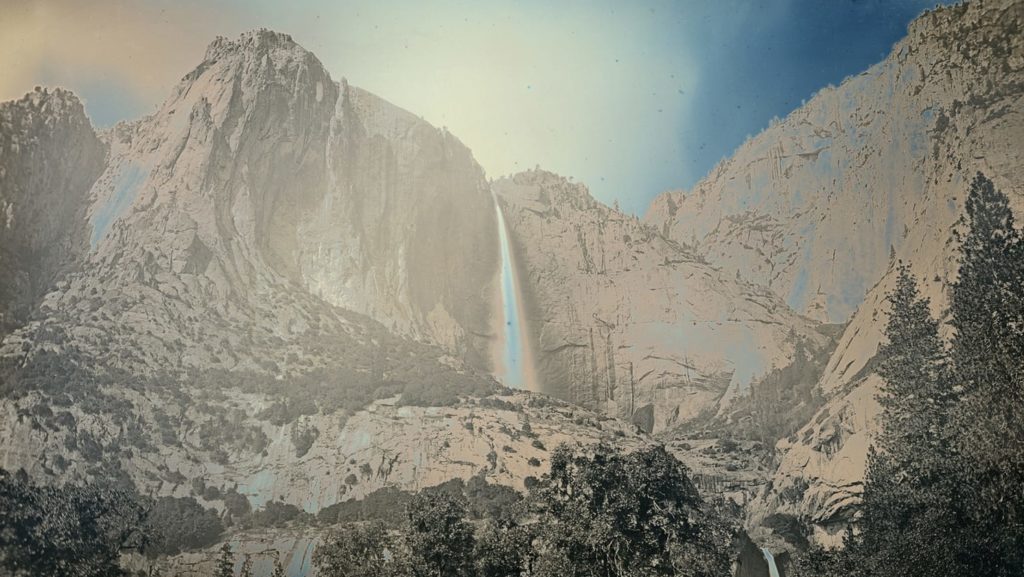“The landscape is what defines me. When I am somewhere new or familiar, I am constantly in dialogue with the past, present, and my future self. When I am thinking about landscape, I am thinking about those who had stood on this land before me. Whoever they are, hopefully, history recorded their markings on the land for us to study and contemplate” — Binh Danh, Vietnam-born American photographer
Born in a South Vietnamese village during the Vietnam War, Binh Danh has an MFA from Stanford and teaches at San Jose State University.
Saigon fell on April 30, 1975. In the wake of the Communist takeover, his family — mother, father, older brother, two older sisters, and assorted relatives on his mother’s side — fled Vietnam for a Malaysian refugee camp on the island of Pulau Bidong. There they stayed for nine months, a period of which Danh, a baby at the time, has little memory.
The family eventually received asylum from the U.S. and, like thousands of others, embarked on a perilous, nerve-rattling voyage by boat. They emigrated in September 1979 and settled in the San Jose area. For years, his father ran a TV repair shop and his mother worked in a factory.
Binh Danh’s parents spoke little of the war, but the boy was ravenous to fit the pieces together, to recover memories, to understand the family history. Studying photography at college, he started combing eBay for archival materials related to the war: photos, dog tags, documents. He pored over Vietnam War-based comic books, watched Vietnam War movies and, in 1999, returned to Vietnam for the first time and visited with his maternal grandmother.
Always he was obsessed with geography, landscape, and the long-term effects of war on the human body and spirit. Vietnam in his mind’s eye was green and lush, but also a place of danger: the enemy, armed to the teeth, could be lurking beneath the cover of tropical trees.
What if the plants themselves could witness war, hold the events in their cells? What would they have to teach us?
Back in San Jose, he writes: “One summer, I was motivated to experiment with photosynthesis and its pigments after observing how grass changed color under a water hose that was left on the lawn.”
He developed a process of printing, using only chlorophyll and light, whereby shadowy images of soldiers, Vietnamese civilians, chevrons of fighter planes, and camouflage patterns were superimposed on leaves from the vegetables and flowers that grew in his mother’s backyard San Jose garden.
The result was the series “Immortality: Remnants of the Vietnam and American War.”

The photos don’t “take sides;” rather, they seek to understand, to incorporate, to consider all those traumatized by this terrible war during which American planes dumped 11 million gallons of toxic Agent Orange on the Southern Vietnamese countryside.
The figures on the leaves are dim, hard to make out, fading before our eyes. Why do we wage war? they seem to ask. Does anyone ever really “win?” Why this senseless, sorrowful carnage? How can we not realize that we all belong, that everyone is our brother and sister?
Binh Danh began visiting national parks, fascinated by the idea that they are open to everyone while also still feeling in some sense an exile; a man thoroughly American but permeated by the blood memories of another country. His emotions were further compounded by the fact that the land on which the parks were located had often been taken forcibly from Native Americans.
Yosemite is perennially associated with the photographer Ansel Adams whose platinum silver prints of the park’s craggy cliffs, evergreen-forested slopes, and moon-haunted skies are visually imprinted on every American who even tangentially knows and loves the West.
But why should Yosemite “belong” to Ansel Adams? Binh Danh seemed to silently wonder.
He taught himself daguerreotype, a 19th-century, labor-intensive form of photography using silver-coated copper plates.
And he proceeded to make Yosemite his — and newly ours — as well.
A collection of his national park photos, entitled “The Luminescence of Memory,” is on view through June 15 at ROSEGALLERY in Santa Monica’s Bergamot Station. The exhibit includes images of Yosemite, Joshua Tree, and Death Valley.
The solarized prints have a silvery sheen in which you can almost see yourself reflected. Waterfalls, streams, and other bodies of water show up a startling rinse-blue seldom found in nature, lending the photos an otherworldly, even comically menacing air.
We know this place — and yet where is it? What are we seeing? Who are we? Are the Martians about to descend upon American soil? Are the Viet Cong going to start rappelling down Bridalveil Falls? But the photos are also beautiful, finely detailed, and lovingly wrought.
“The Enigma of Belonging,” a two-volume collection of Binh Danh’s photographs and archival materials, includes reflections on his work from colleagues and friends.
Andrew Lam, a memoirist and journalist who left Vietnam for the U.S. at the age of 11, contributes a wrenching essay in which he describes destroying three generations of photos, at the behest of his panicked mother, as the Communists approached.
For years as an adult, he berated himself, bitterly regretting the loss. Then one night he had a dream.
“I saw what I hadn’t seen before: that nothing was ever truly lost…Precious things…refuse oblivion. They simply wait to be rendered into testimonies, into stories and songs.”

